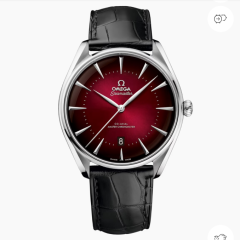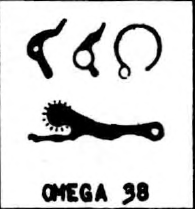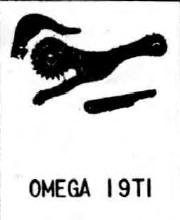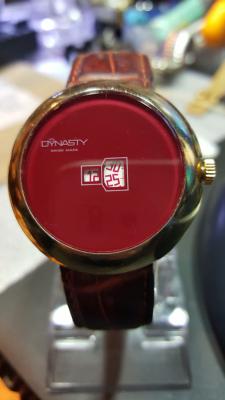Leaderboard
Popular Content
Showing content with the highest reputation on 10/21/24 in Posts
-
Well, I am so glad to see the movement working. Actually, from very long time I don't feel some kind of excitement or something of the sort when putting watch movement alive, but now this here awakes feelings and reminds me of my youth, when such excitement was normal. Amplitude... Have said it many times - it is easily seen without timegrapher, especially when balance is with arm (2 spokes). Try to put a dot with marker on the balance rim. The best place for the dot is under the cock, when balance in rest. Then observe the dot, it is perfectly seen when balance stops in order to change the direction, and smashed when balance rotates fast. So You will be able to see the dot positions when balance is rotated to the maximum, and this is all needed to determine the amplitude. Then, the next step is to learn to do (see) the same, but without dot. Observe the place where the arm (spokes) is connected to the rim. This is like a dot, but actually they are 2. Not a problem at all... Seems that You amplitude is not so big, but watching it on a video is not relevant, so try to determine it the way I wrote above. Thus You will be able to check if the timegrapher reads amplitude correctly.3 points
-
Ethyl alcohol is denatured in numerous ways, sometimes changing the color of the flame. I have tried several brands available from grocery/hardware stores here and found that they don't all perform the same- some are sootier, some don't seem to make quite the same amount of heat. But even those get plenty hot enough to blue small watch parts. I use a small brass pan similar in size to Mike's caseback pan, with fine brass filings in it, perhaps 3-4mm deep. Just a teaspoon or so. For a watch hand, to get the most even color, you want to heat it very slowly. Like take a good 5-7 minutes or more to come up to color. A pan with a handle makes it easy to distance it from the flame to allow the color to develop gradually. Taking time like this will let the color equalize nicely; a typical problem with a hand is getting too much color quickly on thin areas, while thicker ones lag behind, and when they've caught up, the thin areas are too light. Playing the pan over the flame even once certain areas are a deep blue lets the others catch up while not overheating the already-done areas. Letting the blue develop over time also seems to make a more robust (thicker?) oxide layer. You'll have to do a few to get the knack with your pan and lamp. The next most important thing is cleanliness. I take already clean hands, lay them on a clean piece of paper, and rub over them with freshly cut pithwood wetted with benzine (lighter fluid is fine). 99% iso alcohol is good too. Blow off any stray bits of pith with a blower (not your breath!!). If you have fresh brass filings, heat them in the pan for some time before use. This will burn off any contaminants, you will almost certainly see some smoke, and you don't want that happening when going for an aesthetic blue. Here's my pan with the amount of filings I tend to use.3 points
-
3 points
-
The spare wheel from the Favre is a perfect fit! Thanks you guys!3 points
-
There isn’t a delete post function in the forum software, if you accidentally post twice or in the wrong place ask a moderator to help by reporting the post and comment on what the problem is and we’ll help. Tom2 points
-
I very much doubt that it was ever available so you're down to tracing it out. If you suspect the Triacs then just pull them and test them.2 points
-
Absolutely i will.... I have in past for earlier designs.... its very simple not fancy in any way, i have little knowledge of electronics so its not a fully automated machine in that the jars are swapped out by hand.....that part would be the little effort involved. I may at some point make a rotating table for the jars but I'm saving that until i get the new watchroom built next year. Just a cobbled together machine from a drill stand,a dc motor, a power source, and a programmer. The baskets are also cobbled together from nuts, bolts and plastics. Simple , reliable and efficient from picking the principles used for any well designed machine and cleaning methods. I'll post my full idea on cleaning towards the end of the week.2 points
-
I haven't found the time to work on the ratchet wheel yet, but I couldn't resist the temptation of assembling the movement to see if it would actually run.... and it DOES!! .2 points
-
Solved this. There was too much play between the hammer and the centre chrono wheel heart. Adjusted one of the eccentrics to tighten it up, refitted the hand while squeezing the reset pusher, and it’s all good. Happy 70th birthday for my mum’s partner Thanks as always for the helpful suggestions. I have another Landeron 48 from ebay incoming - hopefully my experience servicing this one will help me fix the next one.1 point
-
1 point
-
Lift angle is quite easy to work out from watching the balance.1 point
-
1 point
-
I have hidden one of your posts. We're having fun! Your photos have disappeared, please reinsert them.1 point
-
52. I don't have any data on this movement, but I figured that I could use the readings I got at 52 deg to see if there were any odd readings/differences. But to be honest, I'm already glad I got it running the way it does with my self-made parts actually . Do you know what the lift angle is?1 point
-
There doesn't appear to be any information on this so looks like you'll have to resort to measuring for the crystal and general searches for the Crown & Hands. I presume you're looking for original hands as the ones fitted aren't.1 point
-
1 point
-
This is tapered pin. One of the ways to get it out is to press it from behind. Another is to grasp it with cutting pliers and pry it.1 point
-
Yes, the 0.1mm bit on the picture has 1,2mm carbide tail. 0.6 and 0.7 too have suitable tails for making cutters out of them. Of course, one should use broken bits that are good for this purpose only. The 3.17mm tail can be turned in the lathe to 2mm or whatever the milling attachment is made to take. Sometimes it is soft enough, sometimes needs annealing. It is of some kind special, not usual tool steel. Another source for carbide material suitable are carbide drill bits with 1.5mm tail, they are made entirely of carbide.1 point
-
1 point
-
I would love to do it your way, but I have absolutely no clue how to do that. I've seen a few projects on this forum and I'm full of admiration but really don't feel capable of recreating them. If you'd do a walk-through...1 point
-
Well I think that’s pretty conclusive! Broken pipe off the seconds hand it is. My seconds hand is complete flat with nothing in the centre. So grateful to you all for your help. Learning so much every day in this new hobby.1 point
-
Think this is nearly but not quite unless something is missing from the photo? What size is it? Edit Or maybe this. Double Edit I think this answers the question that it's an Omega 19" from 1897 date as advised by @rjenkinsgb and the part left in the movement is broken https://urdelar.se/products/omega-19-cal-omega-19-lob?variant=329471868928851 point
-
Well not my solution I found a little watch and jewellery shop that advertised watch repairs available. So I went in and thought maybe I can get some advice The old chap took it into his workshop area which I could see from the counter. I saw him turn on his desk lamp and put his magnifying headset on and pick out a tool but that's all. 30 seconds later he came back with the end links removed without a mark on the watch or links. Even the spring bars were undamaged. It was like magic I don't know what he did but he didn't even charge me. I gave a donation to my favourite charity, cancer research, of £20 and e-mailed him to let him know.. He replied to say "anytime"1 point
-
Thank you for your kind words @RickTock and glad my Vostok cal. 2409 walkthrough could be of help! I somewhat recently serviced a Vostok 2431 and it uses the exact same type of calendar complication as the Vostok cal. 2414. You'll find my service walkthrough of it here. Anyway, I'll include the assembly pictures for the calendar works in this post for your and any future Watch Repair Talker's convenience. The only difference is that the cal. 2414 doesn't have what I call the "1st intermediate date indicator wheel" so you can simply ignore that part. I include the picture where the "1st intermediate date indicator wheel" is assembled anyway since it shows lubricating the upper section of the cannon pinion. Unfortunately, it has become increasingly difficult to source parts for Russian movements as Russian sellers have been banned on eBay. Good luck with your reassembly!1 point
-
The issue is the new Bergeon cannon pinion removers are not the same as the vintage version. The vintage Bergeon cannon pinion removers were far better and could remove the summer pinions. A dead straight pull/lift is essential for the cannon.1 point
-
1 point



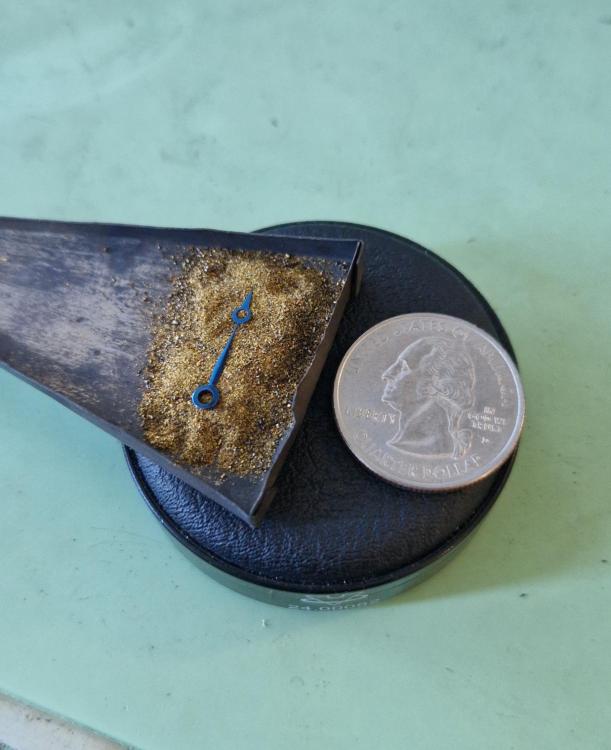
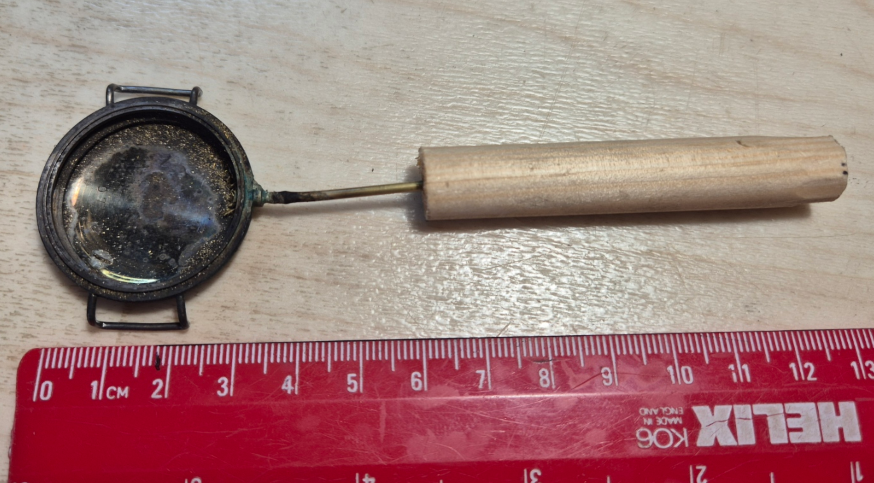
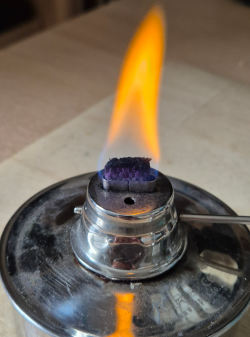





.thumb.jpg.cb17a66989f1e796fd4217db2e9ca9df.jpg)
